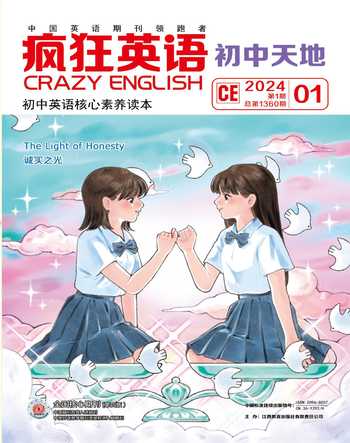Dancing Shadows:The Magic of Jinzhou Shadow Puppetry舞影之谜:锦州皮影戏的魅力
杜晰滢
Jinzhou Shadow Puppetry is an part ofJinzhous cultural heritage. It uses shadow puppetsto tell attractive stories. This art has been passeddown for many years and continues to attractaudiences with its fascinating history and culturalimportance.
The origins of Jinzhou Shadow Puppetrycan be traced back to the Guangxu period of theQing Dynasty. Zhao Honglin, a puppet artist fromTangshan, whose ancestral( 祖先的) hometown was in Chenjiafen, the northern part of Jinzhou City,formed a puppet troupe( 劇团) along with Shen Yongxiangand Li Xiu. In 1877, they performed in locations like Wangtun,Majia, Baileihu, gradually forming the distinct Jinzhou ShadowPuppetry with a Liao-western style. There is a growing number ofpeople using shadow puppets for offerings, leading to the creationof shadow puppet boxes and shadow puppet societies.
Jinzhou Shadow Puppetry uses ass hide puppets that areskillfully controlled by performers. The puppets are moved behinda screen, and their shadows create lively characters. With the helpof lights and music, the stories become more engaging( 迷人的),bringing ancient tales to the audience. These performances are notonly for fun, but also teach important lessons and show traditionalcustoms.
To fully appreciate Shadow Puppetry, audiences must watchwith focused attention, closely following the movements andmusic created by the performers. The synchronization( 同步) oflighting, music, and storytelling transports viewers into a world ofenchantment( 魅力) and imaginative storytelling.
Jinzhou Shadow Puppetry is very popular because of itsbeauty and cultural importance. It helps pass on traditional valuesand knowledge to younger people. This cultural heritage is deeplyrooted in history and represents the intelligence and creativity ofthe Jinzhou community. As young learners, it is important for usto learn about and protect this cultural heritage so that it can beenjoyed and valued by future generations.

